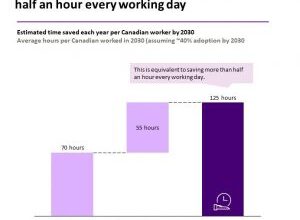5 things CIOs must understand about AI infrastructure

Generative AI has captured everyone’s attention — and for good reason. But getting from potential to profitability does not come without risks, such as assuming that your established processes for deploying mainstream enterprise IT infrastructure will work in the new era of complex AI superclusters.
A solid technology infrastructure has always been essential. Still, CIOs who want to ensure AI delivers on its promise will need a better idea of what’s required to design, deploy, and manage this foundational component at scale, including:
- Infrastructure requirements
AI-based environments are relatively new, and trying to align traditional enterprise computing design and architecture with high-powered processors, low-latency networks, and scheduler-driven workload environments introduces a new set of challenges. Physical data center design is foundational, and the silent, longtail impact of an incorrectly provisioned system can mean launching into a “false start” deployment based on incorrect power, cooling, and network elements.
2. Performance optimization
Second to good design is the impact of complex, low-latency GPU networking fabrics. These systems require precision configuration, and while untuned systems remain functional, teams sit blissfully unaware of low-performance levels on AI workloads and, ultimately, substantial missed ROI.
Mark Seamans, Vice President of Global Marketing at Penguin/SGH, likens it to Formula 1 Racing. “An improperly configured system may seem like it’s running like a Formula 1 car, but it’s only when you put five other cars on the track that you realize your competition is blowing past you,” he says. “Making sure you work with a prescriptive set of criteria during design, build, and deployment means you can hit full Formula 1 speeds even if you’re the only one on the track.”
3. Scalability, flexibility, and reliability
When you consider AI infrastructure and its building block nature, precision becomes even more important for handling varying AI workloads effectively. Yes, that’s scalability and flexibility to accommodate changing computational demands. But, as Mark notes, “It’s also about stability as teams go through security, software, and firmware updates, or in cases of adding new AI nodes to expand cluster capacity. If the building blocks were done non-optimally, future changes could destabilize systems.”
4. Data management
Organizations are used to environments where other servers can pick up the load if one goes down. Yet, AI systems don’t operate the same way. Misconfigured networks, node failures, or even the loss of an individual GPU, can kill a job that may have been running for weeks – frustrating users and adding work for heavily burdened IT teams.
“Penguin has developed many innovations for improving cluster performance and reliability – including a solution that isolates pending GPU failures, where we can evacuate those nodes, triage it outside of production configuration, remediate the problem, and then reprovision and put it back as a healthy node into the cluster,” says Mark.
5. Cost considerations
Cost is always a consideration, but the implications associated with AI workloads are on a larger scale. Consider a system with 1,000 nodes, each connected by ten network cables and multiple complex network fabrics. The hardware procurement, significant energy consumption for power and cooling, and maintenance costs can stretch budget constraints upfront if not balanced with deployment timelines and performance requirements. With these multi-million-dollar AI configurations, delays in bringing a system to production drives significant unnecessary costs from depreciation and missed ROI.
Proof points from an experienced AI infrastructure partner
Over 25 years of HPC experience and more than seven years of deploying AI infrastructure at scale has made Penguin Solutions the go-to for AI platforms. With more than 50k GPUs deployed and customers like Meta relying on their specialized expertise, Penguin is ready to be the trusted partner to help every customer on their race to the future.


